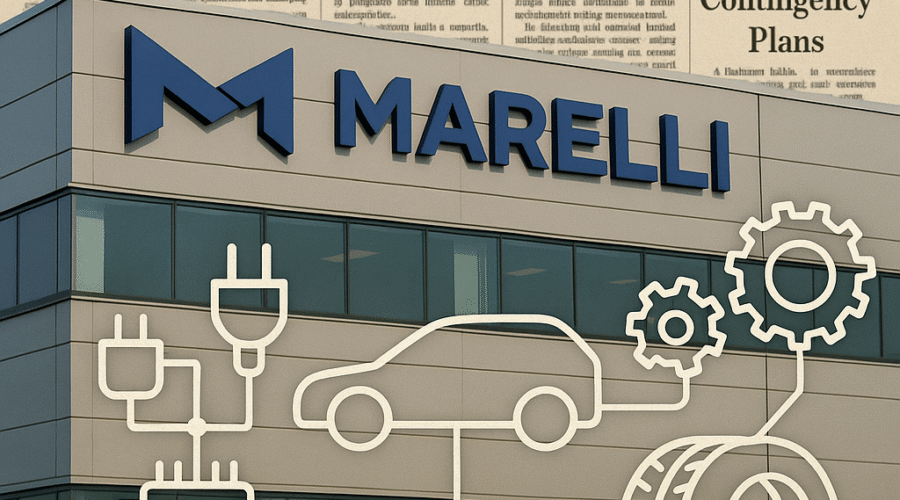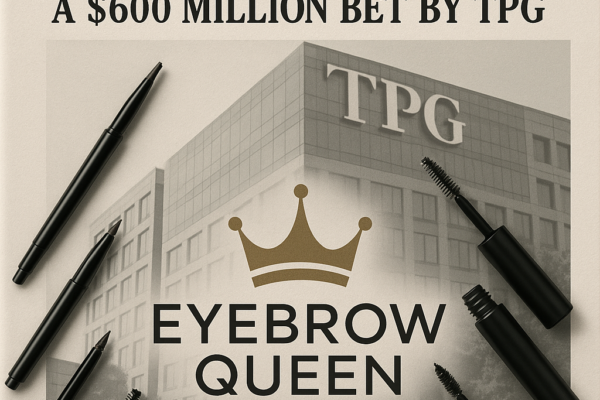As global automotive suppliers grapple with post-pandemic realities, Marelli Holdings’ potential Chapter 11 bankruptcy filing reveals systemic challenges in private equity-owned automotive components manufacturing. The KKR-backed Japanese supplier’s contemplated $1.2 billion debt restructuring[1][9] underscores mounting pressures across Tier 1 suppliers navigating electrification transitions, supply chain fragmentation, and private equity exit strategy complexities. This development follows Marelli’s failed 2022 Japanese civil rehabilitation attempt[5][14] and reflects growing acceptance of U.S. bankruptcy mechanisms for multinational automotive restructurings.
💼 Seasoned CorpDev / M&A / PE expertise
Structural Vulnerabilities in Marelli’s Financial Architecture
Debt Accumulation Timeline
Marelli’s current financial crisis stems from layered capital structures created through KKR’s aggressive consolidation strategy. The 2017 acquisition of Calsonic Kansei ($4.5B)[15] and 2019 reverse merger with Magneti Marelli ($7.1B)[7][8] created a leveraged behemoth carrying ¥1.1 trillion ($9.5B) debt by 2022[5]. Despite KKR’s 2020 $1.2B capital injection[10][11], COVID-related production halts and semiconductor shortages eroded liquidity buffers[16], pushing debt-to-EBITDA ratios beyond sustainable levels.
Comparative Restructuring Mechanisms
The contemplated Chapter 11 filing contrasts sharply with Marelli’s 2022 Japanese civil rehabilitation process, which required unanimous creditor approval[1][5]. U.S. bankruptcy code’s debtor-in-possession financing provisions and cramdown capabilities[13] offer Marelli strategic advantages, including ability to:
- Reject unfavorable contracts
- Secure $570M exit financing[1]
- Implement cross-border insolvency protocols across 58 global facilities[15]
Automotive Supply Chain Contagion Risks
As Nissan and Stellantis’ primary lighting/electronics supplier[4][15], Marelli’s restructuring triggers contractual review clauses across 200+ OEM contracts. Industry analysts note parallels to 2023 Visteon restructuring, where 11% production delays occurred across three automakers[16]. The potential domino effects include:
| Risk Factor | Impact Magnitude |
|---|---|
| Just-in-time inventory disruption | 15-20 day production delays |
| Alternate supplier qualification | 90-120 day lead times |
| Warranty claim complexities | $40-60M contingent liabilities |
Private Equity’s Automotive Supplier Dilemma
KKR’s Marelli position highlights structural challenges in PE-owned automotive investments:
- High leverage ratios (6-8x EBITDA typical)
- Technology transition capex requirements
- Illiquidity premium demands (20%+ IRR)
The failed 2022 exit via MBK Partners’ debt acquisition[12] demonstrates shrinking secondary market appetite for complex automotive positions. Bain & Company analysis suggests PE-owned suppliers face 23% higher restructuring probabilities than corporate divisions[16].
Strategic Alternatives and Industry Implications
Marelli’s path forward presents three viable scenarios:
- Successful out-of-court restructuring (35% probability)
- Pre-packaged Chapter 11 with KKR equity rollover (50%)
- Full liquidation through Chapter 7 (15%)
Each scenario carries distinct implications for automotive M&A valuations and supplier-OEM contract renegotiations. The likely outcome—a §363 sale preserving North American operations—could establish new benchmarks for cross-border insolvency resolutions.
Conclusion: Rethinking Automotive Supplier Finance
Marelli’s crisis underscores the urgent need for automotive capital structures adapting to industry transformation. As electrification doubles R&D requirements[16], traditional LBO models face existential challenges. Institutional investors now demand:
- Debt covenants linked to technology roadmaps
- Supply chain resilience metrics in credit agreements
- ESG-linked financing for EV transition costs
The Marelli situation may accelerate adoption of asset-light supplier models and SPAC-based exit strategies for PE firms trapped in automotive investments.
Sources
https://www.thestreet.com/automotive/major-auto-parts-company-considers-filing-chapter-11-bankruptcy, https://www.tradingview.com/news/reuters.com,2025:newsml_L2N3SA01A:0-marelli-considering-filing-for-chapter-11-in-us-kyodo-reports/, https://www.marketscreener.com/quote/stock/NISSAN-MOTOR-CO-LTD-6492477/news/Marelli-considering-filing-for-Chapter-11-in-US-Kyodo-reports-50183124/, https://www.carz.com.my/webview/2025/06/nissan-stellantis-supplier-marelli-reportedly-filing-for-bankruptcy, https://www.japantimes.co.jp/news/2022/03/02/business/corporate-business/marelli-debt-reorganization/, https://thelatinamericanlawyer.com/nhg-helps-in-execution-of-warranty-package-for-marelli/, https://sites.law.berkeley.edu/thenetwork/2018/10/28/car-parts-supplier-magneti-marelli-bought-by-kkr/, https://www.financierworldwide.com/pe-backed-calsonic-kansei-to-acquire-magneti-marelli, https://www.autonews.com/manufacturing/suppliers/an-marelli-mulls-bankruptcy-0607/, https://auto.economictimes.indiatimes.com/news/auto-components/marelli-secures-1-2-billion-capital-to-bolster-cash-and-flexibility/76041585, https://www.marelli.com/en/news/marelli-secures-additional-capital-to-bolster-cash-and-flexibility.html, https://www.kedglobal.com/private-debt/newsView/ked202212040002, https://www.investopedia.com/terms/c/chapter11.asp, https://www.autonews.com/suppliers/key-supplier-marelli-talks-lenders-debt-reorganization-report-says/, https://en.wikipedia.org/wiki/Marelli_Holdings, https://supplychaindigital.com/supply-chain-risk-management/automotive-industry-faces-uncertainty-2025, https://www.walterpack.com/fr/what-is-a-tier-1-automotive-company/





